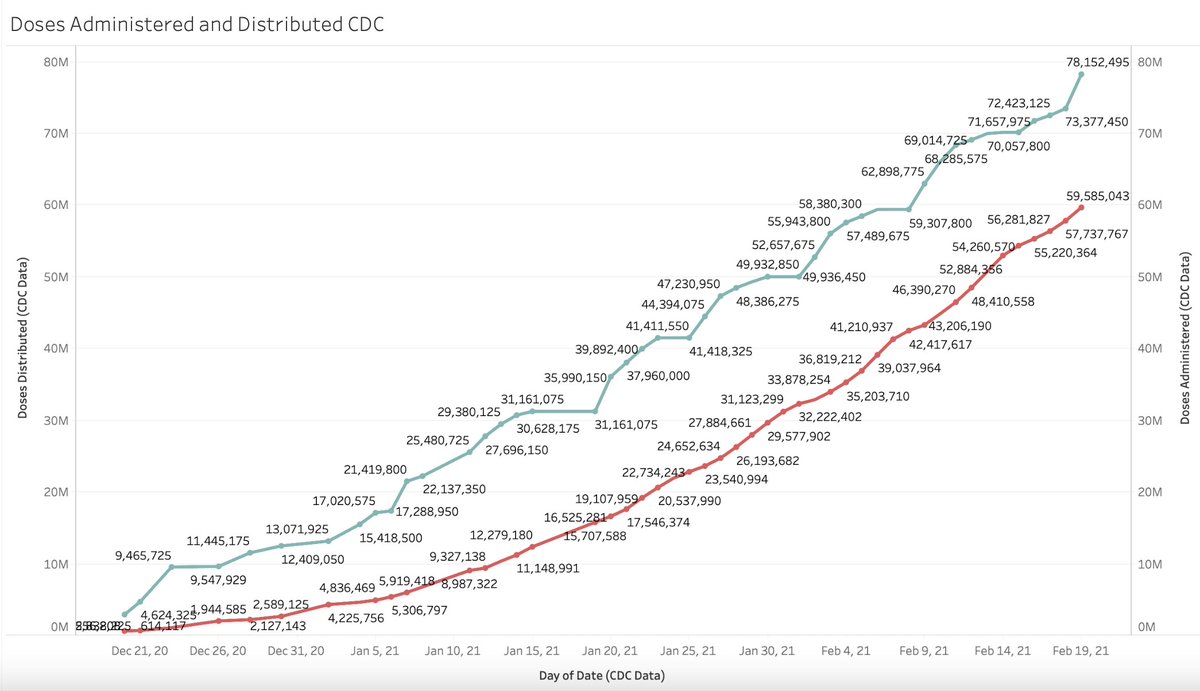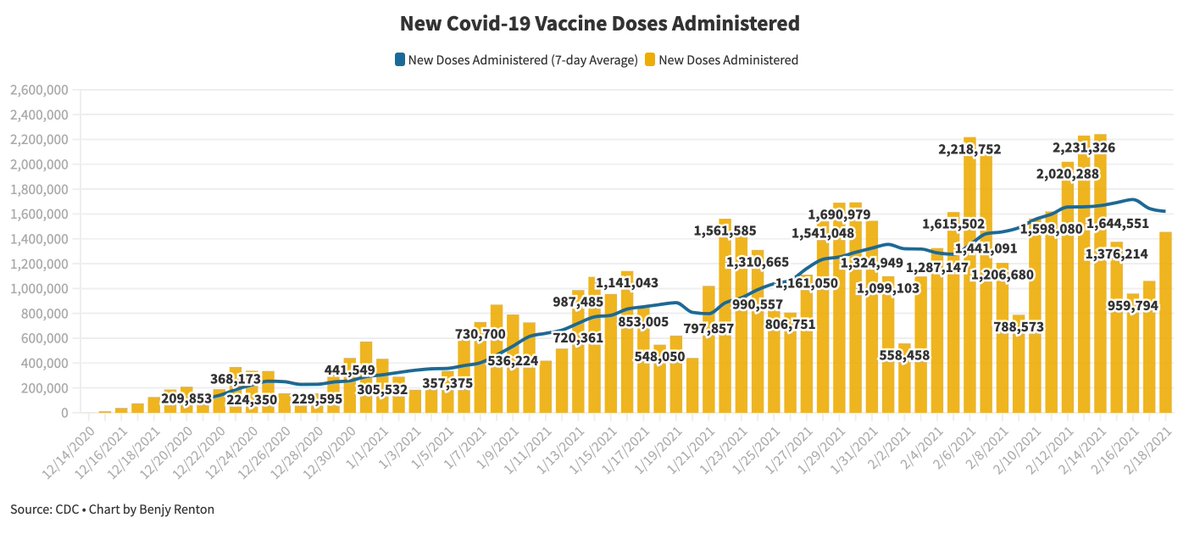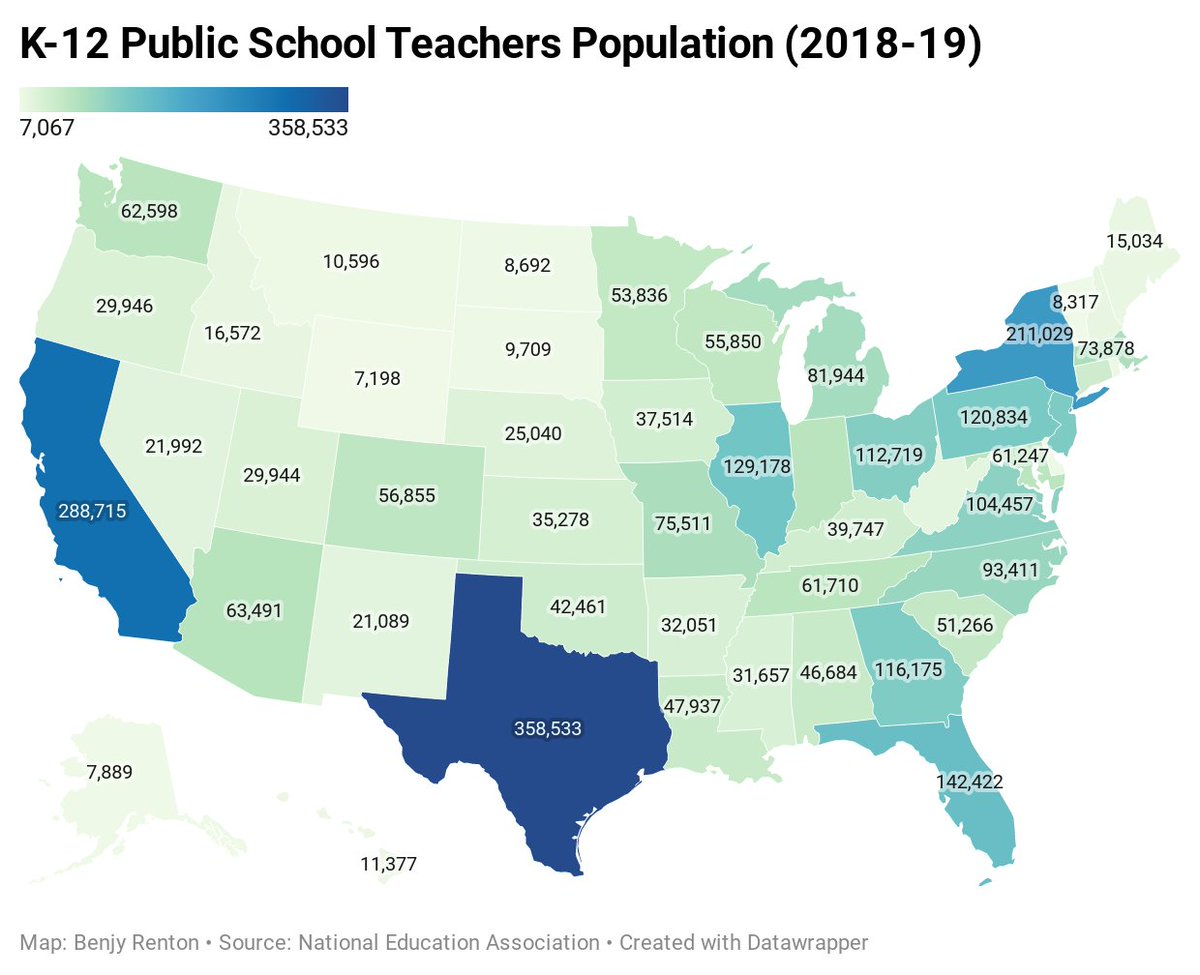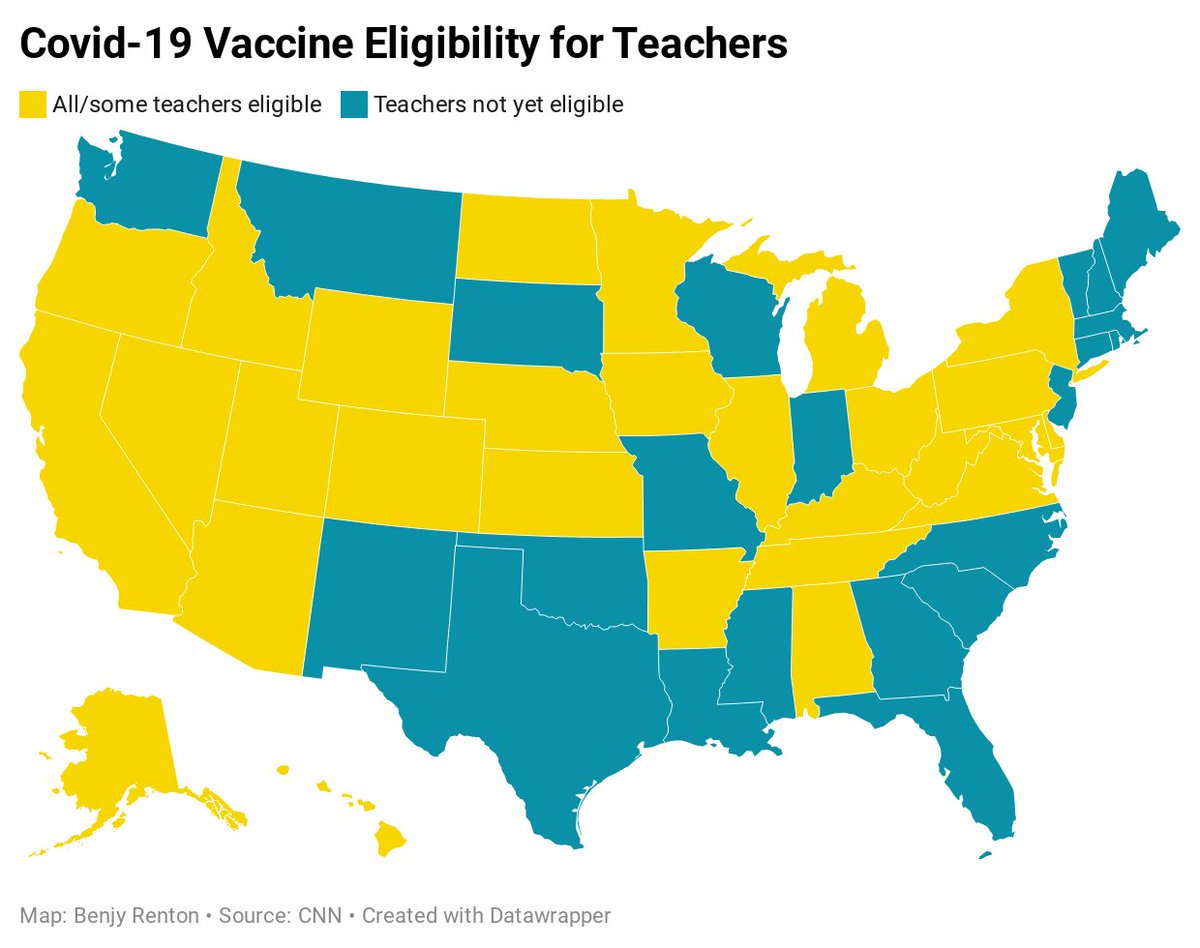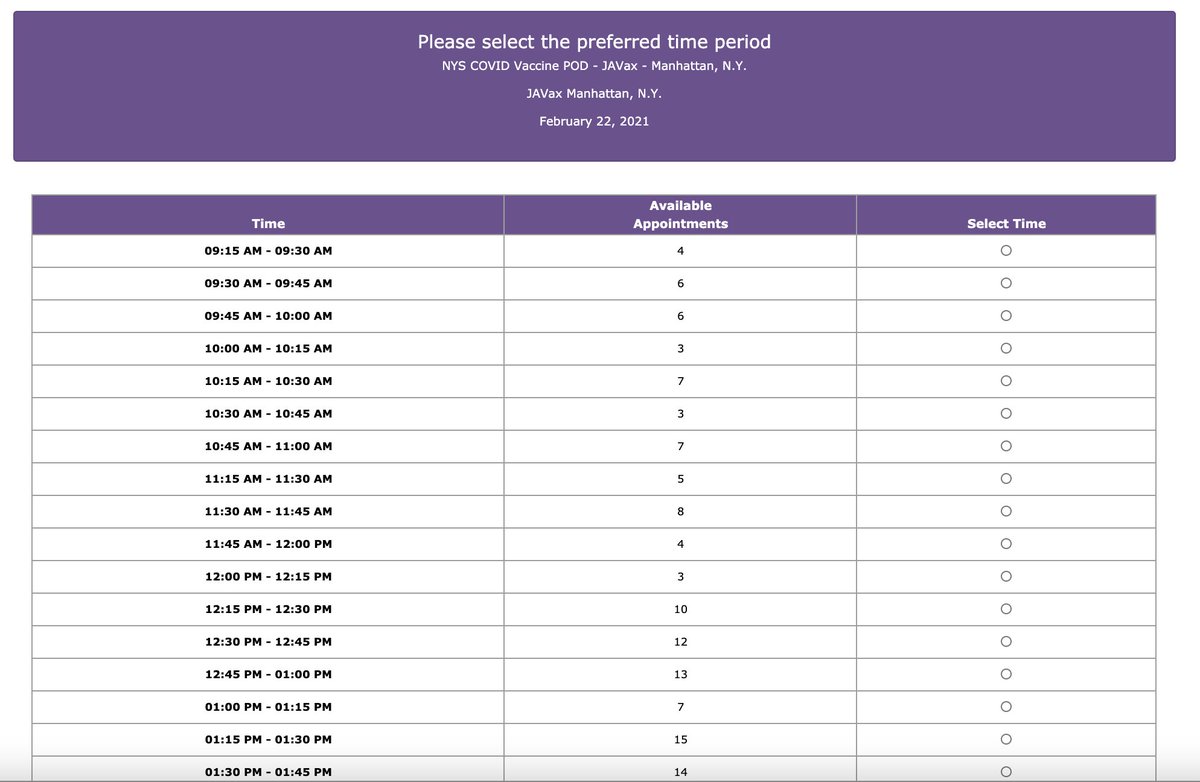
Despite case counts subsiding nationally, many colleges and universities are seeing record-high case counts and multiple outbreaks, with some eclipsing fall semester case totals. While we have learned a lot from the fall, there are still additional measures we can take. Thread: 

The universities selected for this analysis were chosen due to their recent attention in college media (in other words, there's no particular pattern for selection). From this table, we notice that colleges have been reaching case peaks ~14 days after the start of classes. 

What does this mean? Based on the virus' incubation period and national transmission, we can assume that cases are imported when students return to campus. However, the vast majority of spread occurs when these imported cases spread to others within the first few days of class.
An additional factor: Variants. According to my count using @insidehighered data, the B.1.1.7 variant has been confirmed on 9 college campuses, according to the individual universities. 3/6 of the colleges in our analysis have recorded variant cases — exact numbers unknown. 

First, UC Berkeley. A self-sequester mandate was put into effect on February 1 and lifted on February 15 (students were initially not allowed to exercise outside but this was changed). Resident students are tested twice weekly and cases are trending down.
dailycal.org/2021/02/15/uc-…
dailycal.org/2021/02/15/uc-…
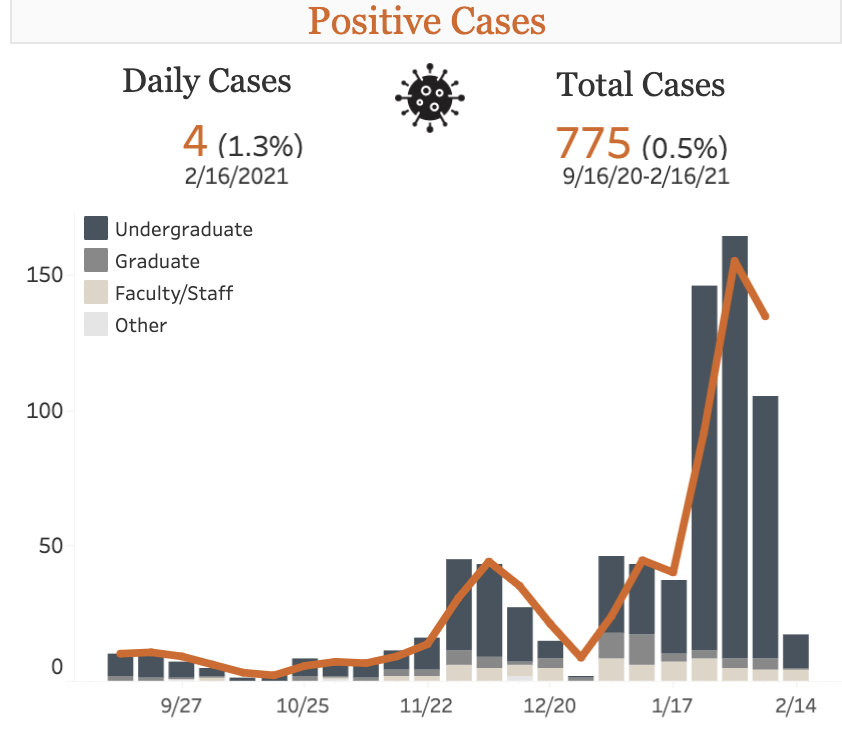
Next, the University of Michigan, which now makes up 62% of the county's cases and 64% of the state's B.1.1.7 cases. A stay-at-home recommendation was issued at the end of January, and cases still remain at a high level. Reporting from @CalderLewisTMD:
michigandaily.com/section/news-b…
michigandaily.com/section/news-b…

The University of New Hampshire recently switched to the "orange" level due to 428 students currently in isolation and over 650 in quarantine.
unh.edu/coronavirus/da…
unh.edu/coronavirus/da…

The situation at UMass-Amherst shows that no school is "immune" to rapid rises, including small, rural institutions. While the university seems to be past case peak after a self-sequester period, the first few days are critical to controlling spread.
dailycollegian.com/2021/02/what-w…
dailycollegian.com/2021/02/what-w…

The situation at the University of Wisconsin-Madison is just emerging with a new spring case count record shattered today. Expect to see more cases in the coming days — only then can we make a better assessment as to what is driving the spread. 

Finally, the University of Virginia is experiencing a major outbreak (possibly driven by B.1.1.7) and now makes up 10% of the state's total cases reported yesterday. Reporting has also shown possible connections to Greek life.
cavalierdaily.com/article/2021/0…
cavalierdaily.com/article/2021/0…

These colleges are not alone — many schools across the U.S. are experiencing outbreaks. I applaud the work of many institutions (including the ones listed here) for ramping up testing compared to the fall — it may be because of this we are "finding" more cases.
However, the virus is spreading on our college campuses, which function as pressure cookers during this pandemic. Our data from the fall have shown that it usually takes around two weeks for changes in the epidemic size in the community to make it to the college.
In other words, the situation on campuses reflects community spread around two weeks ago.
Testing is also not always the issue. While students are now being tested more, the virus is spreading through social gatherings, many indoors due to the cold weather.
Testing is also not always the issue. While students are now being tested more, the virus is spreading through social gatherings, many indoors due to the cold weather.
The good news: As we continue through the spring, it is likely that more vaccinations will lead to transmission declining nationwide. Colleges need to do their part and be able to keep communities safe. How do we do this? Learn from the fall:
1. The first two weeks are critical to controlling outbreaks (solely relying on arrival testing will not cut it). Colleges should consider a quiet/hibernation/phased reopening for the first few weeks, in addition to conducting multiple layers of arrival testing.
2. Testing still remains a vital part to controlling spread on campus.
3. Colleges should promote low-risk options for socializing. While it is easy to think of parties as fueling the spread, it is often small social gatherings taking place in poorly ventilated dorms.
3. Colleges should promote low-risk options for socializing. While it is easy to think of parties as fueling the spread, it is often small social gatherings taking place in poorly ventilated dorms.
Bottom line: These next few weeks will be absolutely critical to controlling viral spread on college campuses. We must take advantage of case counts declining nationally to ramp up testing and sequencing at colleges, as well as continuing to rely on the Swiss cheese model. 
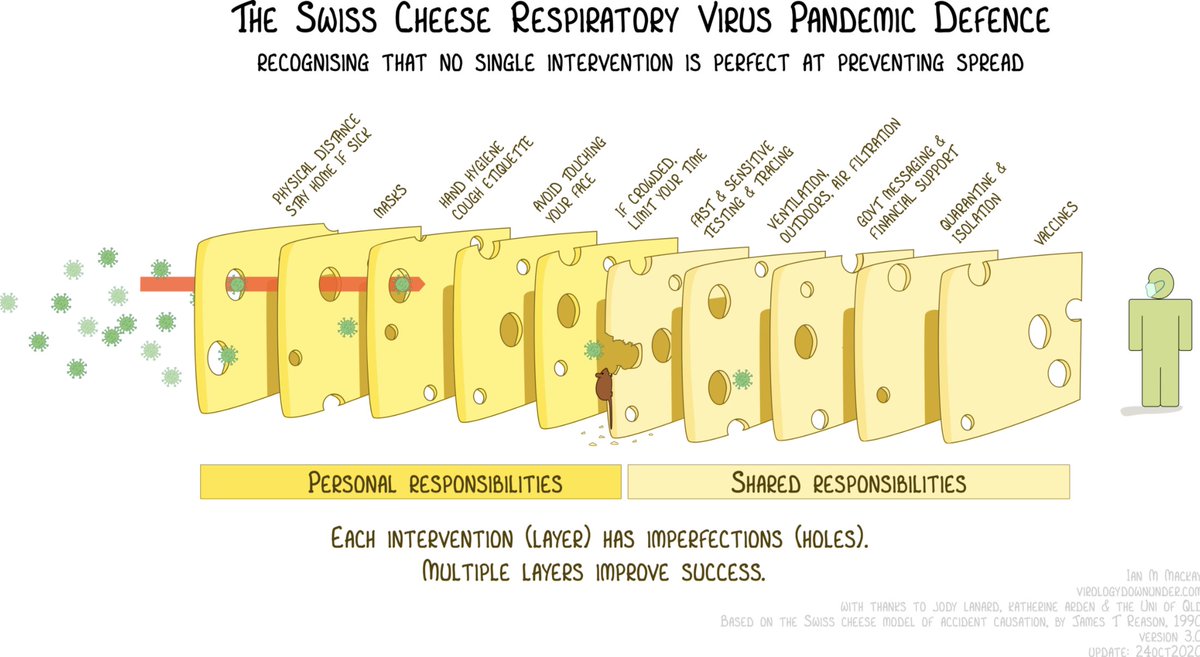
Finally, thank you to all the excellent student journalists working hard to chronicle the situation on their campuses. We need to learn from each other, and accurate information is critical to holding those accountable.
• • •
Missing some Tweet in this thread? You can try to
force a refresh


